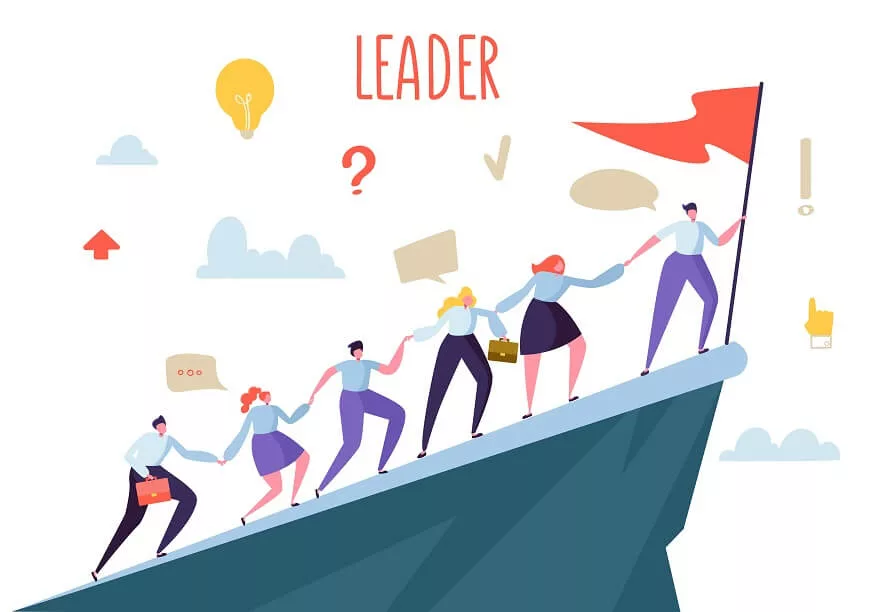As we evolved as humans, we possessed a few abilities such as bipedalism, which is the ability to walk on two bare legs. Humans evolved bipedalism over 4 million years ago. Other important human characteristics that evolved over time are a large and complex brain, the ability to make and use tools, and learning languages that advanced and developed over time.
Learning is the process of gaining new knowledge and attaining new skills, it is the ability to understand. This is something people usually do by themselves, although it generally gets easier with education. With education, learning happens more effectively and efficiently. When people learn new things, they gain unimaginable confidence. Learning contributes to self-efficacy in completing a task or tackling a challenge, as well as achieving higher levels of resilience.
Motivation is an important factor that influences the learner. Any amount of force will be futile if there is no motivation to learn. Remember, the more the motivation, the better the learning. Along with motivation, a learner must have a goal to be motivated and to progress.
Active learning improves a variety of outcomes, especially for students. The benefits of these activities are many, some of which include increased ability to retain and transfer new information, improved critical thinking, high levels of motivation, improved interpersonal skills, and decreased course failure.
Effective Classroom Learning
Mentioned below are some elements of effective classroom learning:
- Students must ask questions.
- There must be an outlined course.
- Always obtain a variety of learning models.
- Include multiple learning styles.
- Keeping the lectures interesting.
Active learning methods keep students engaged in learning by thinking, discussing, investigating, and creating. Students must practice skills such as problem-solving, resolving complex questions, making decisions, finding solutions, and explaining ideas in their own words through discussion and writing. Mentioned below are some active learning strategies:
- Assembling in groups to discuss a topic.
- Reflecting individually at the end of each class session on what they learned and what doubts they still have.
- Working with a partner through an application to solve problems and practicing presentations to perform for an audience.
Also read : 15 Best Maths Puzzles for Class 3
Types of Active Learning: Examples
The following are examples of different types of active learning, which include: teaching, focused listening, discussing, journaling, and brainstorming, group work, formulating questions, note-taking, annotating, and role-playing. Mentioned below are active learning strategies discussed in detail:
- Think-pair-share is a collaborative teaching strategy first proposed by the University of Maryland in the year 1981. It is used to help students form individual ideas, then discuss and share them with others in the group. It is also used before reading or teaching a concept and works better with smaller groups.
- Educators implement teaching with the aim of transmitting skills to a learner, in the context of an educational institution. Teaching is closely related to learning, the student’s activity of appropriating knowledge.
- Reading is the process of making sense or understanding the meaning of letters and symbols, through sight or by touch.
- Cooperative learning is an approach used in education that organizes activities for academic and social learning experiences. There is so much more to cooperative learning than merely bringing students into groups; it has also been described as “structuring positive interdependence.”
- Problem-based learning is a pedagogy that is absolutely student-centered, in which students learn about subjects through the experience of solving an open-ended problem found in materials.
- Project-based learning is extremely student-centered, and it involves a dynamic approach. It is said that students acquire a deeper knowledge through active exploration of real-world challenges and problems in this process.
- Inquiry-based learning starts by posing questions, problems, or scenarios. It is a form of active learning that contrasts with traditional education, which generally relies on the teacher presenting facts and sharing their knowledge about the subject.
- A Harvard professor popularized Evidence-based in the early 1990s as a peer instruction interactive teaching method.
- Brainstorming is a creativity technique done in a group, where efforts are made to find a conclusion for a problem by gathering a list of spontaneous ideas contributed by the group.
- Peer review is the evaluation of work by people with similar competencies. It functions as a form of self-regulation within the relevant field.
- Use reciprocal questioning to encourage an open dialogue in which students take on the role of the teacher and create their own questions about a topic.
- Just-in-time teaching is a two-step series of learning activities in which students complete a set of activities outside the classroom and submit their work to the teacher.”
Here are some additional examples and tips of active learning techniques:
- One-sentence summary.
- Role play.
- The muddiest point.
- Three-step interviews.
- Minute paper.
- Fishbowl.
- Game-based learning.
Among all the active learning strategies mentioned above, the best strategy used is Think-Pair-Share. This process allows students to think individually and then makes them analyze and clarify their response collaboratively. It helps students organize knowledge with priority and apply and integrate new information through brainstorming or summarization.
Also read : Knowing when and how to say “no”
Mentioned below are a few types of active learning and their benefits:
- Take Notes.
- Write About It.
- Teach Someone Else.
- Move Around.
- Take Breaks.
- Learning for Life.
Amongst the types of active learning mentioned above, science has proven that note-taking increases memory and understanding of new ideas, and writing about it helps in another way of actively engaging with educational material.
Here are some tips to encourage active learning and ways to get learners actively involved in the classroom or at home:
- Give learners clear aims and lessons to refer to them at each stage.
- Give learners tools to follow the aims and lessons.
- Make arrangements for learners to reflect on the lessons learned.
- Teachers do not have to stick to their plan.
Mentioned below are the principles of active learning: These key principles are from the science of learning that will help to ensure that taught materials stick in the minds of students’:
- Deep processing.
- Chunking or cognitive processing.
- Building associations.
- Dual coding or stimuli to help learners encode information.
- Deliberate practice.
Understanding the ways of learning is necessary: learning includes visual, auditory, tactile, kinesthetic, sequential, simultaneous, reflective and logical, verbal, interactive, direct experience, indirect experience, and rhythmic and melodic.
Also read : Animal Safety for Kids: How to Approach or Avoid Animals
At EuroSchool, we want to ensure that we classify active learning activities as follows: problem-based learning, discovery-based learning, inquiry-based learning, project-based learning, and case-based learning. These approaches pertain to being student-centered, but they vary quite widely in their implementation, and with the skilled group of educators we entrust this teaching and learning ability in great hands.
We use the best active learning methods to help students achieve their goals by employing all the aforementioned active learning strategies in our modern teaching techniques. Ensuring we provide active-based learning to all students at all times. Active-based learning or activity-based learning is entrenched in the idea that children are active learners rather than what we perceive them to be as passive recipients of information. If children are provided with the opportunity to explore on their own and are given an optimal learning environment, then learning becomes more fun, and the impacts are long-lasting.










